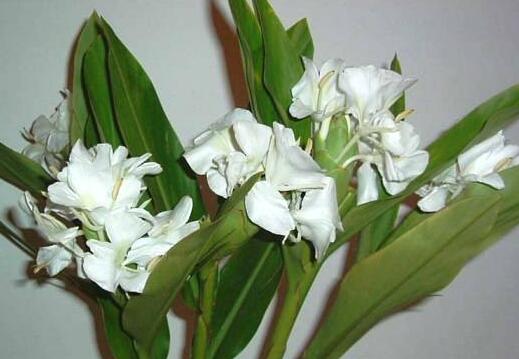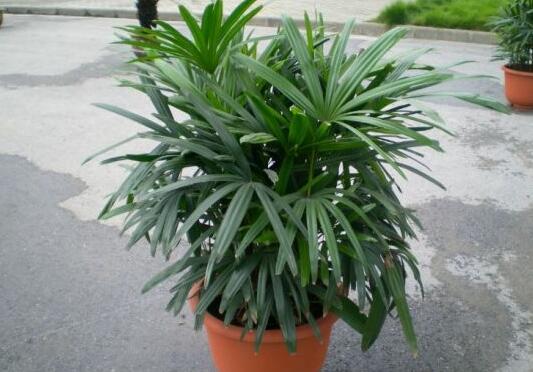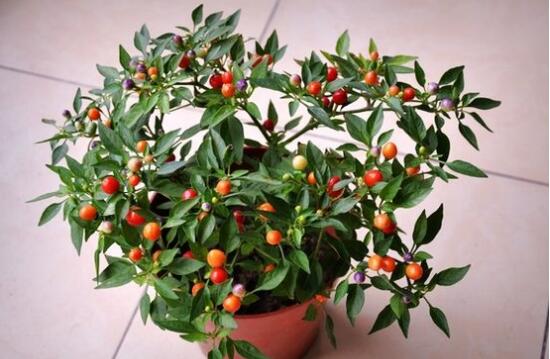How to control ginger blight, ginger pest control methods/strengthen management is the most important
If people get sick if they are infected with the virus, will plants get "sick" if they are attacked by germs and pests? The answer is yes, for example, when planting ginger flowers, if improper maintenance is easy to make it infected with mosaic disease, anthracnose, Fusarium wilt and so on, then how to control ginger Fusarium wilt? Let's take a look at the prevention and control methods of ginger flower diseases and insect pests.
How to control Fusarium wilt of ginger flower

Fusarium wilt, also known as blight, is characterized by spots on the ginger plant, the plant will wither, leaves, flowers, stems and so on will slowly die, and may also affect top shoots, seedlings, twigs and so on. The cause is mainly caused by fungi and bacteria.
Prevention and treatment: do a good job in pruning ginger flowers to ensure good light transmission between its branches and leaves. Choose disease-free seeds when planting and avoid being too wet when watering. When the disease occurs, it can be sprayed with 300-500-fold carbendazim, and 600-700-fold 80% carbendazim can be irrigated to the root.
Control methods of diseases and insect pests of ginger flower
1. Mosaic disease
In addition to Fusarium wilt, ginger flower is also susceptible to mosaic disease. Its main symptom is that there are yellowish linear stripes on the leaves, which look like mosaics. The main pathogen is mosaic virus, which is transmitted by aphids and other pests.
Prevention and control methods: at the initial stage of the disease, spray 500 times of 5% Shiduqing wettable powder, or 500 times of 20% virus Ning water-soluble powder, spray once in about 10 days, 2-3 times can generally control mosaic disease, and then strengthen the management according to the culture method of ginger flower.
2. Anthrax
In the control methods of ginger flower diseases and insect pests, many diseases mainly harm seedlings, but diseases may also occur on adult plants. Anthracnose is one of them, and it mostly occurs on adult plants, resulting in dark green spots on leaf tip and leaf edge, and then becomes grayish white, grayish brown and so on.
There are many reasons for anthracnose infection, including dry soil, too few nutrients, shaded environment, too high humidity, too much water, and so on. The pathogen may also be parasitic in crops and spread to other plants, so it must be controlled in time.
Prevention and control methods: pay attention to reasonable fertilization at ordinary times, apply sufficient base fertilizer when putting on the basin, do not apply too much quick-acting nitrogen fertilizer at ordinary times, mainly keep the environment ventilated and the light is sufficient, when the disease occurs, you need to spray 50% carbendazim wettable powder 500 times, 65% zinc 600 times 800 times, and so on.
Culture methods and techniques of red shredded ginger flower
Red silk ginger flower, also known as scarlet ginger flower, it is native to India, beautiful flowers, colorful flowers is a common ornamental plant, many people like to make it into a potted plant at home. It's just that people don't know much about its breeding methods, and they can't raise it well. Today, I will make a special introduction to the breeding method of red silk ginger flower. Friends who need it can focus on it.
Culture method of red shredded ginger flower
1. Planting of red shredded ginger flowers
Red silk ginger flowers are mostly planted in separate roots, and can only be carried out in spring. when you want to plant, you should cut its rhizome and plant it into a flowerpot, which can not be watered immediately, but can only keep the pot soil moist. Wait for its rhizome to sprout before watering.
2. Management of red shredded ginger flowers
Usually after planting red silk ginger flower, no matter it is potted or planted on the ground, it should apply sufficient base fertilizer, and it should keep the soil moist during the growth period, and it needs topdressing twice during the growth period. Red silk ginger flowers bloom in August every year, and when they bloom, they move to the semi-shady place, which can prolong the flowering period. After the flower fade, the inflorescence should be cut off in time, and all the withered parts of the ground should be cut off in winter, leaving only the underground roots, which is conducive to the safety of red silk ginger flowers through the winter.
3. Disease and insect pest management of red silk ginger flower
During the growth period of red silk ginger, leaf spot and leaf blight are its common diseases. after the occurrence of these diseases, you can dilute them with 65% of Dysen zinc wettable powder and 600 times the amount of water, and then spray the leaves directly, usually two or three times.
What is ginger flower? How to cultivate wild ginger flower artificially?
Picture: ginger flower
[FAQ] what is ginger flower? How to cultivate wild ginger flower artificially?
[expert answers]
Aliases: butterfly ginger, Suihua Shannai, butterfly, fragrant snow, night cold, turmeric orchid, turmeric
Also known as wild ginger flower, perennial herb, is a freshwater herb of the genus Zingiberaceae. Flowering from May to November, the plant height is 1 to 2 meters, and the underground stem is massive and fragrant, shaped like ginger. The inflorescence is 1-2 meters high, the inflorescence is spikelike, the calyx is tubular, the leaf inflorescence is alternate, the leaf blade is long and narrow, both ends are pointed, the leaf surface is bald, and the leaf back is slightly hairy. Not cold-resistant, like warm winter, humid summer environment, poor drought resistance, the initial growth should be semi-overcast, the peak growth period should be sufficient sunshine. The soil should be fertile and have strong moisturizing capacity. Ginger flowers have a fresh fragrance and can be used as a natural air freshener indoors. The color is round and mellow, usually white flowers. Potted plants can be watched, white flowers such as butterflies, so also known as butterfly ginger, white butterfly flowers and so on. Tropical regions originating from tropical Asia, India and Malaysia were probably introduced into China in the Qing Dynasty. In addition, ginger is the national flower of Cuba and Nicaragua.
Cultivation techniques of ginger flower:
1. Seedling propagation technology.
There are sexual reproduction and asexual reproduction. The propagation speed is also fast by the method of ramet reproduction. In the areas that can survive the winter outdoors, ramets can be intercepted from adult plants in four seasons. They can be planted in February and March of that year, and can blossom in July and August. Each new plant can be divided into 20-40 plants in the whole year, with good flowering quality and high yield. But in Chibi area of Hubei Province, it can blossom from June to July every year from November to March of the second year. It blossomed until the frost hit the ground before it withered. By the second year, it can produce as many as 32000 to 38000 flowers per mu. It produces about 35000 to 40, 000 flower roots. There is one root every 5 to 10 centimeters.
2. Planting season and planting mode
The golden ginger flower has strong adaptability to the soil, and the cultivated soil is the most suitable for fertile loam or sandy loam with good drainage, but the soil should always be moist or close to the water source, it will grow more vigorously. It can be planted in spring, summer and autumn, but the planting in February and March in spring is the best, and high yield can be obtained in the same year. The average yield per mu is nearly 2000 branches / month in that year, and can reach more than 2200 branches / month in the second year. Before planting, the soil was deeply ploughed, basic fertilizer was applied, and the bed was raised in deep ditches. Single-row planting or double-row planting was adopted, with a row spacing of 50 × 50cm and 2500000 plants per mu. If the condition of fertilizer and water management is good, it can blossom in late May of that year. When a seedling or rhizome is planted, about 20-40 new plants can be divided in the whole year, and more than 15 leaves can blossom.
3. Fertilization method
The use of microbial fertilizer combined with fermentation organic fertilizer can achieve very good results. The effect and economic benefit of using microbial fertilizer combined with fermented organic fertilizer on ginger flower is better than that of traditional fertilization. According to the law of growth and development of ginger flower, different fertilization methods and amount of fertilizer should be adopted according to the intake of water and fertilizer in different periods. The fertilizer of ginger flower can be divided into two types: base fertilizer and topdressing fertilizer.
4. Pest control
Anthracnose mainly harms stems and leaves. At the initial stage of the disease, 50% carbendazim wettable powder is sprayed 500 times, once every ten days.
[editor's comments] the flower phrase of ginger flower is "keep memory in summer forever". Wild flowers are generally used as medicine, potted plants are available for appreciation, and generally bloom in summer and autumn. The editor of the first Agricultural Classic has briefly introduced the ginger flower above. I also have an overview of several key points of ginger flower cultivation techniques. I hope this article will be helpful to you.
- Prev

What should we do if brown bamboo grows insects? control of diseases and insect pests of brown bamboo / 2 insect pests 2 diseases
In the process of cultivating brown bamboo, the last thing we want to encounter is the problems of diseases and insect pests, which do great harm to it, not only affect the ornamental, but also lead to its death. So what should I do if the brown bamboo grows bugs? What should be done to prevent and control diseases and insect pests of brown bamboo? Next, the editor will take you to learn about it.
- Next

What if winter corals grow worms? pest control of winter corals / aphids and anthracnose
Winter coral, a kind of indoor potted plant with excellent ornamental quality, is very adaptable and easy to raise at home, so it is deeply loved by flower friends. But in the process of breeding, because most of the flower friends are novices, it is easy to maintain improperly, and the result is that the plant worms get sick. So, what if the winter coral grows worms?
Related
- Fuxing push coffee new agricultural production and marketing class: lack of small-scale processing plants
- Jujube rice field leisure farm deep ploughing Yilan for five years to create a space for organic food and play
- Nongyu Farm-A trial of organic papaya for brave women with advanced technology
- Four points for attention in the prevention and control of diseases and insect pests of edible fungi
- How to add nutrient solution to Edible Fungi
- Is there any good way to control edible fungus mites?
- Open Inoculation Technology of Edible Fungi
- Is there any clever way to use fertilizer for edible fungus in winter?
- What agents are used to kill the pathogens of edible fungi in the mushroom shed?
- Rapid drying of Edible Fungi

